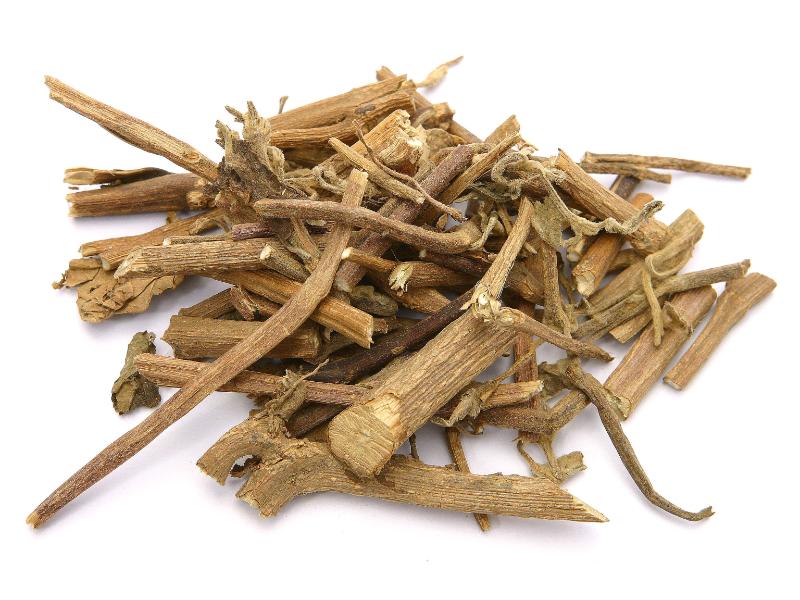Search in medicinals
Pogostemonis Herba
Patchouli
藿香 〔藿香〕 huò xiāng

Alternate Chinese names: 广藿香 guǎng huò xiāng
Kingdom: Plant
Origin in PRC Pharmacopoeia: Pogostemon cablin (Blanco) Benth. (PRC Pharmacopoeia)
Origin in unofficial sources: Pogostemon cablin (Blanco) Benth.
Use: Medicinal
Category:
Properties: Acrid; slightly warm.
Channel entry: Lung, spleen, and stomach channels.
Actions and indications:
- Transforms dampness: Dampness stagnating in the center burner.
- Resolves summerheat: Initial-stage summerheat-damp and damp warmth patterns.
- Checks vomiting:
Vomiting and retching .
Dosage and method: Oral: 5–10g in decoctions, added at the end to preserve its aromatic quality by safeguarding the volatile oils. It may also be prepared as a tea. This herb can also be used in its fresh form, in which case the dosage is increased.
Warnings: Huò xiāng should not be used if there is exuberant fire in the center burner or in yīn vacuity with internal heat.
Notes: The standard product comes from Pogostemon cablin. However, also used as patchouli is Agastache rugosa (Fisch. et Mey.) O. Ktze., which is commercially specified as 土藿香 tǔ huò xiāng.
Product description: The dried herb of Pogostemon cablin is 30–60 cm long, with opposite branches. The older stems, cylindrical and slightly squared, 4–10 mm in diameter, are grayish green or brown, with scant down. The younger stems are covered with dense down, and stems snap easily to reveal a interior. The leaves, which are shriveled and torn, are soft and pliable, grayish or yellowish green, covered with hairs on each side. Agastache rugosa (Fisch. et Mey.) O. Ktze. sometimes used as patchouli, is similar in appearance but has only scant hair on the stalks, and sometimes has a cylindrical inflorescence.
Quality: A strong aroma is the chief sign of good quality.
Production area: Pogostemon cablin: Guǎngdōng and the Philippines. Also, Agastache rugosa:, not recognized by the Chinese Pharmacopoeia: Most parts of China, and notably Sìchuān, Jiāngsū, Zhèjiāng, Húběi, Yúnnán, Liáoníng.
Etymology: The name huò xiāng 藿香 suggests the perceived similarity of the leaves with those of pulse plants (huò 藿) and reflects the strong aroma (xiāng 香).
Back to search result Previous Next